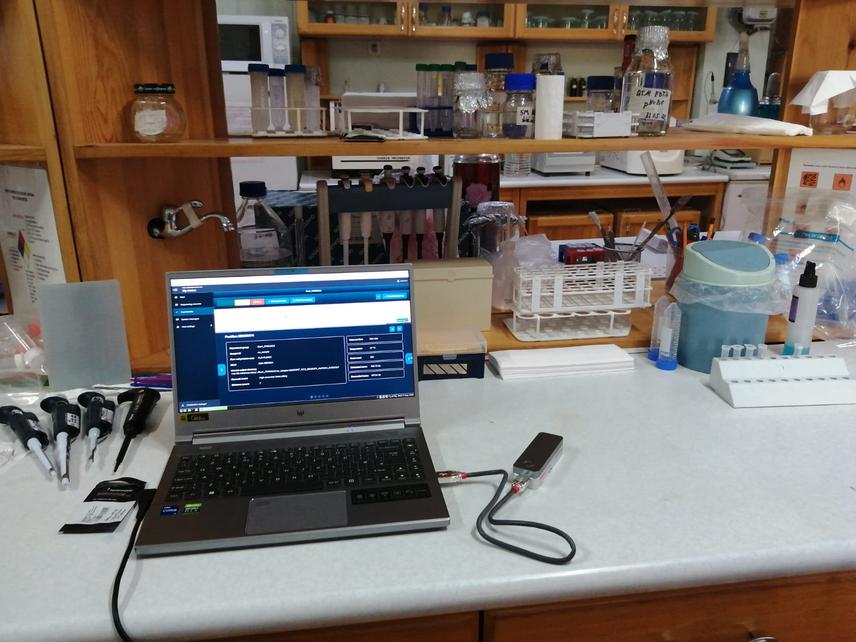Emily Patterson
The illegal wildlife trade (IWT) is a key driver of species extinction. One challenge in combating this trade is the difficulty in recognising protected species particularly once processed, so DNA-based species identification is required. Currently, ‘DNA barcoding’ is the method of choice for species identification. This process consists of four steps: the DNA is extracted, a barcode (section of DNA which is similar within a species but differs between species) is amplified by polymerase chain reaction (PCR), sequenced, and then searched against a reference database to identify matching species.

Traditionally, this process requires sample transfer to a laboratory, uses costly equipment, and returns results weeks later. Advances in DNA sequencing technologies mean it is now possible to carry out rapid, real-time sequencing on-site using a portable device (an Oxford Nanopore Technologies MinION) which weighs about 100g and can be plugged into a laptop through a USB port. Cheap and simple methods for rapid vertebrate species identification outside the lab have been developed using the MinION together with additional pieces of portable equipment. This simplified process could be carried out at low cost, on-site such as at a border customs post, by anyone with minimal training. The main aims for this project are to:
• Carry out the simplified species identification methods developed in Mongolia, an important IWT exporter and transit state.
• Demonstrate the developed species identification methods at the National Forensic Institute, the National University of Mongolia, as well as to the Ecological Police and to any further interested parties.
• Generate new reference sequence data for Mongolian species affected by illegal take and trade which are lacking in reference databases. This will support species identification efforts and enable future conservation and population genetics research.
• Raise awareness of nanopore sequencing within Mongolia, thus introducing local researchers to an affordable means of creating their own reference sequence collections.